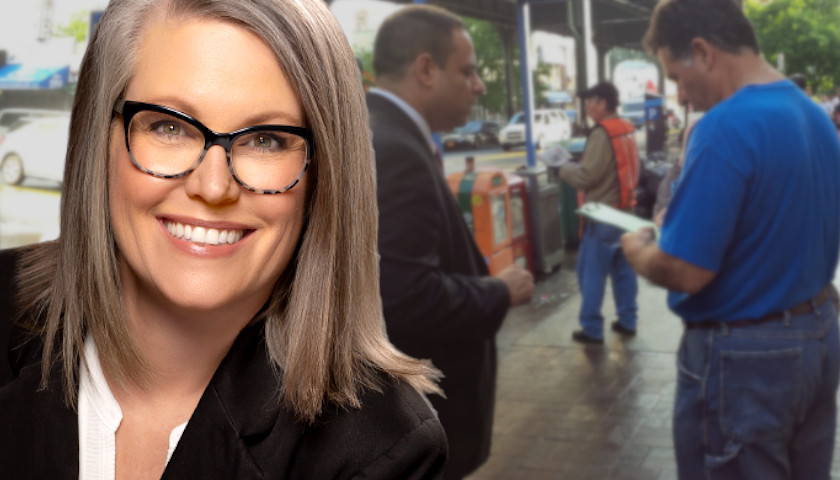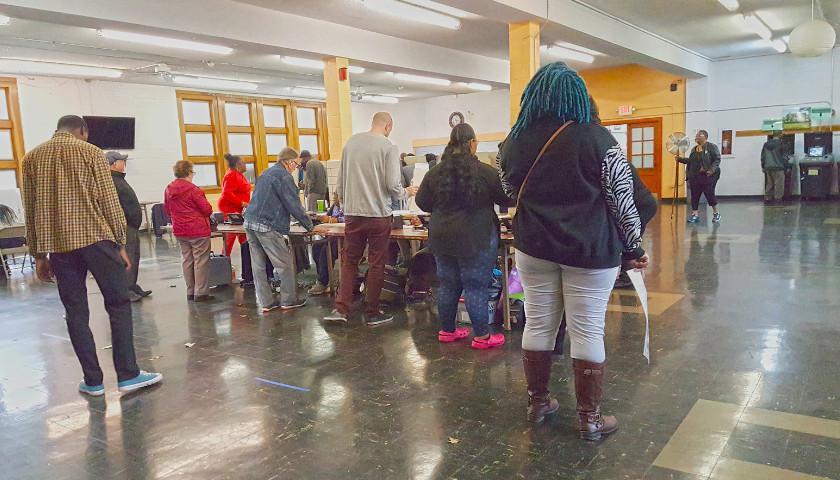Candidates running for office in Arizona are reporting difficulty collecting signatures online due to a “total breakdown” of Arizona Secretary of State Katie Hobbs’ website, as Republican gubernatorial candidate Steve Gaynor described it. Hobbs, a Democrat, is also running for governor. New redistricting maps have been established, and although candidates are allowed to collect signatures from either their old district or their new district, if they’ve filed to run in the new district, the E-Qual system will only accept signatures from the old district with that number — which might be a completely different area.
Labeling the technical difficulties a “total breakdown,” Gaynor said in a statement, “The breakdown of the E-QUAL system is a slap in the face to Arizona candidates and voters, and all the hard work that has been done during the AIRC process. Secretary Hobbs has utterly failed to protect our election process, and her mismanagement of the E-QUAL system is the latest indication that Arizona’s elections are not in safe hands.”
Gaynor, who founded Fair Maps Arizona, a non-profit organization focused on redistricting, said that “Hobbs even blamed the candidates for filling out the forms correctly.” He cited an email Hobbs sent to candidates about the problem, “If you have erroneously opened a campaign profile under the uncertified 2022 maps, an option for you to switch districts to your 2020 district will be provided soon. If you continue to collect signatures under your 2022 district, those signatures may be invalid and subject to challenge in court.”
Most of the districts have different numbers after redistricting, so all the candidates running in them are unable to collect signatures online from voters in their new districts. Due to a state law passed last year that anticipated the problem, candidates are allowed to collect signatures for this year’s race from voters in either their old district or their new district.
Candidates can still collect signatures on paper petitions, but it is considerably more legwork. The glitch also makes it more difficult for candidates running using Clean Elections, who need to collect $5 matching contributions.
E-Qual restricts voters from signing petitions of candidates who aren’t running in their district. But due to the glitch, candidates are discovering that voters who don’t live in their previous districts or their new districts are signing their petitions online.
State Rep. Jake Hoffman (R-Queen Creek) was elected in District 12. His new district is LD 15. But voters from a completely different district — the old LD 15 — are signing his petitions. While they may be considered valid, it means he would need to solicit signatures from areas like Cave Creek that he doesn’t represent.
His other option is to re-file as a candidate in his old district — which means collecting signatures from people who may no longer be his constituents.
Hoffman told The Arizona Sun Times, “It’s an unfortunate situation that the secretary of state is unable to provide candidates the ability to collect electronic signatures from their new districts. These types of process complications discourage civic participation and drive up the cost of elections significantly for candidates. We can only hope that Katie Hobbs resolves this issue quickly to ensure all Arizonans that, choose to, have the chance to get involved in this great American experiment.”
Although the redistricting is over, there are still some small technical details to finalize, such as ensuring that the new boundaries do not split an apartment complex in half. Hobbs said she doesn’t intend on fixing the glitch until the minor adjustments in the redistricting maps are complete, which may not be until the signature collection deadline for many candidates is almost up.
E-Qual has been online since 2012. Its districts were populated with the redistricting that was completed in 2012.
– – –
Rachel Alexander is a reporter at The Arizona Sun Times and The Star News Network. Follow Rachel on Twitter. Email tips to [email protected].
Background Photo “Petitioning” by Costa Constantinides. CC BY 2.0.





